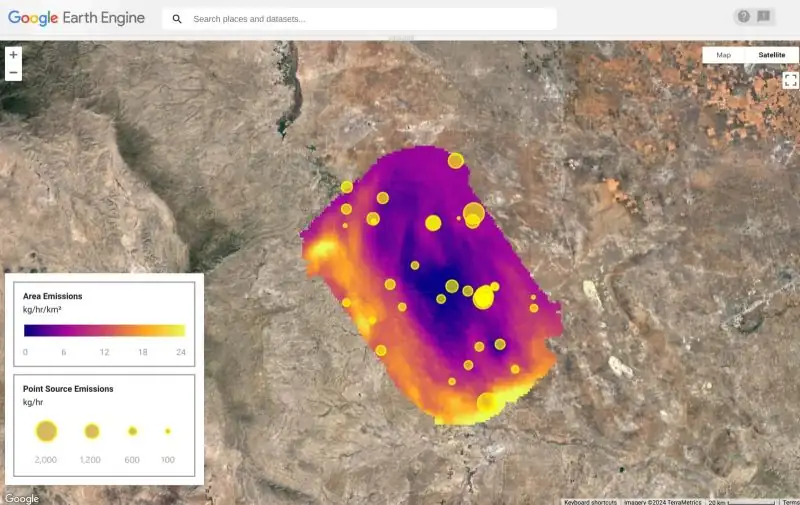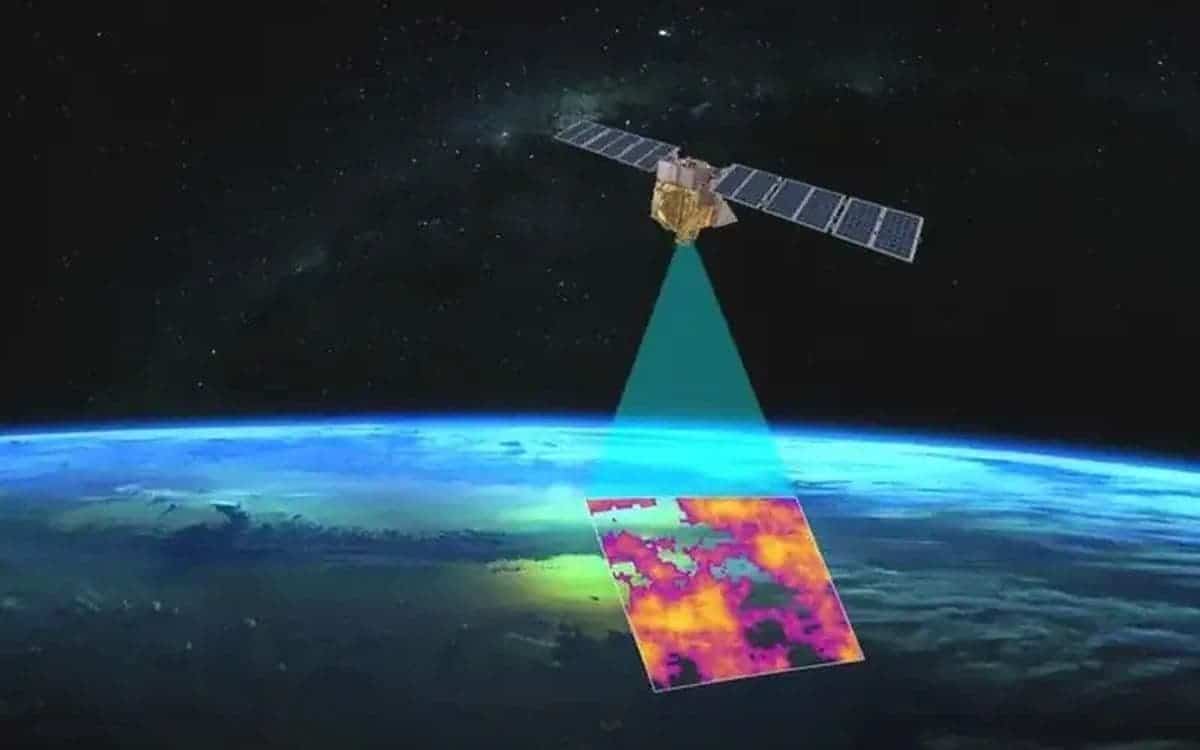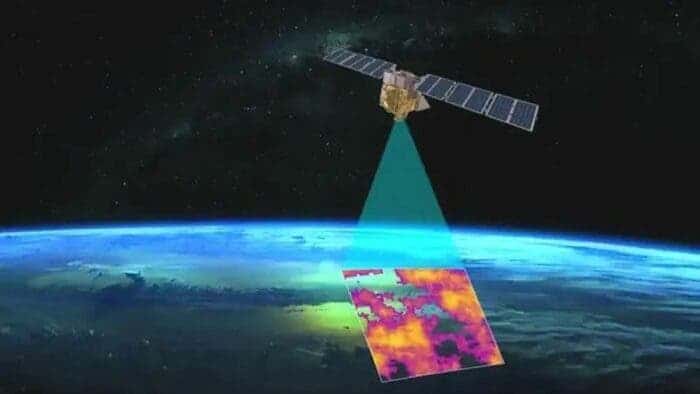Google, a technology leader, has joined forces with the Environmental Defense Fund (EDF) to address one of the most pressing climate challenges: the reduction of methane emissions. Methane, a potent greenhouse gas, is responsible for approximately 30% of global warming since the pre-industrial era. EDF plans to launch the MethanSAT satellite in March this year to monitor global methane emissions. In this project, Google will use AI to identify oil and gas infrastructure and map global pollution sources.

Yael Maguire, head of the sustainability team at Google Geography, said:
Infrastructure is changing rapidly, and keeping maps updated requires constant input of data, and we have deep experience in this area.
This information is incredibly valuable for energy companies, researchers and the public sector to predict and reduce methane emissions.
In the fight against climate change, many government agencies and private companies have focused on carbon dioxide produced by the burning of fossil fuels. However, methane has a stronger greenhouse effect than carbon dioxide. According to the UN Environmental Programme, global warming caused by methane emissions accounts for more than half of the planet’s climate change. This means that it takes nearly 30% of the total warmth. Methane is the main component of so-called natural gas, and methane leaks regularly throughout the supply chain from natural gas wells to pipelines and gas equipment. Landfills and livestock farming are also major sources of methane pollution.
The Partnership
Google’s Geography Sustainability team, led by Vice President Yael Maguire, has partnered with EDF to map methane emissions and oil and gas infrastructure from space. This collaboration aims to provide valuable information to energy companies, researchers, and the public sector. This will help them anticipate and mitigate methane emissions.
The EDF is also working with scientists at Harvard and the Smithsonian Museums and their Joint Astrophysics Center on this initiative. EDF has worked with Google in the past; in 2013, Google let EDF install sensors on its Street View cars to map methane leaks.
MethaneSAT and AI-powered mapping
EDF is launching MethaneSAT, a satellite that will track methane emissions, while Google is using AI to map oil and gas infrastructure. MethaneSAT, scheduled to launch aboard a SpaceX Falcon 9 rocket next month, will survey methane levels over the world’s top oil- and gas-producing regions.
Google’s AI will pair with MethaneSAT’s emissions data to create a global map of pollution sources, such as well pads, pump jacks, storage tanks, and other fossil fuel infrastructure.

Gizchina News of the week
MethaneSAT will orbit the Earth 15 times a day and will survey methane levels in the world’s top oil and gas-producing regions. Algorithms powered by Google Cloud will enable EDF to track methane emissions over time.
### The Importance of Methane Reduction
Methane has a much shorter life span than carbon dioxide, which can linger in the atmosphere for hundreds of years longer. However, methane is 80 times more powerful than CO2 at heating the planet. Preventing methane pollution can have a large and immediate impact on climate change. Scientists believe preventing methane pollution can have a tangible impact on climate stability, and most importantly, the impact can be immediate. MethaneSAT’s data will be made publicly available to researchers and policymakers through MethaneSAT’s website and Google Earth Engine, the company’s cloud-based geospatial data platform.
The Global Context
Methane emissions now make up 60% of the total methane source and come from fossil fuel use, agriculture, and waste management. Over 100 countries, representing 50% of anthropogenic methane emissions, have recently signed up to the Global Methane Pledge. By the end of 2025, EDF and Google expect to have a vastly improved picture of global methane emissions from all major oil and gas basins around the world. This information will be crucial in helping governments and companies make informed decisions about reducing methane emissions and mitigating climate change.
Conclusion
In conclusion, the partnership between Google and the Environmental Defense Fund (EDF) represents a significant step forward in addressing the urgent climate challenge of methane emissions reduction. Methane, a potent greenhouse gas, contributes significantly to global warming, with its impact on climate change surpassing that of carbon dioxide.
By collaborating on the MethaneSAT project and leveraging advanced AI technology, Google and EDF aim to map methane emissions and oil and gas infrastructure worldwide. This initiative will provide valuable insights to energy companies, researchers, and policymakers, enabling them to anticipate, monitor, and mitigate methane emissions effectively.
The launch of MethaneSAT, coupled with Google’s AI-powered mapping capabilities, heralds a new era in environmental monitoring and climate action. By tracking methane levels in key oil and gas-producing regions and identifying pollution sources, this initiative promises to facilitate informed decision-making and drive meaningful reductions in methane emissions.
The importance of methane reduction cannot be overstated, given its disproportionate impact on global warming compared to carbon dioxide. With MethaneSAT’s data set to be made publicly available, researchers and policymakers worldwide will have access to vital information to guide efforts in combating climate change.
As over 100 countries commit to the Global Methane Pledge, the collaboration between Google and EDF comes at a critical juncture. By enhancing our understanding of methane emissions and their sources, this partnership lays the groundwork for targeted interventions and policy measures aimed at curbing methane pollution and safeguarding the planet’s climate future. Together, Google and EDF are driving innovation and collaboration to address one of the most pressing environmental challenges of our time.





